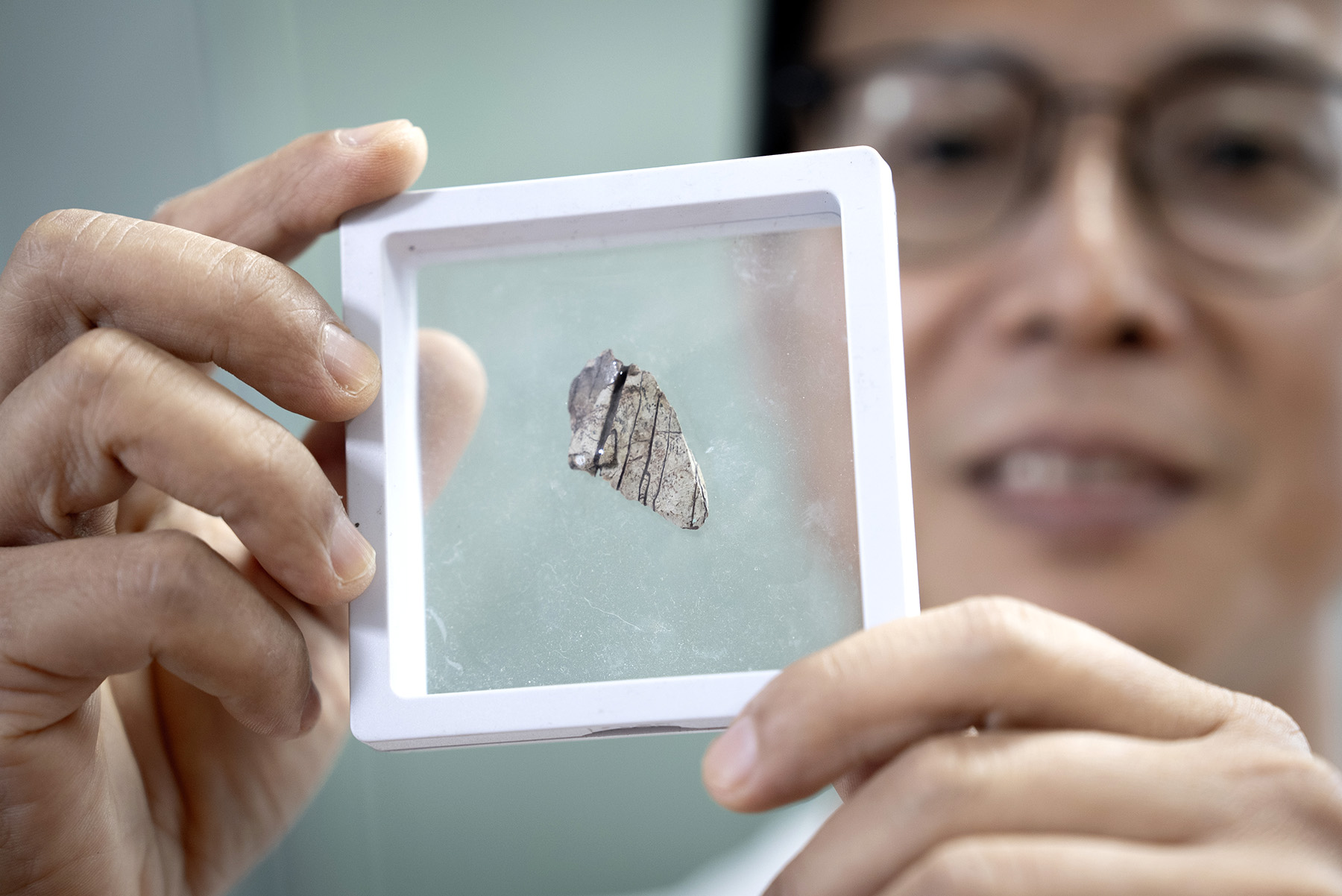
A research team in China recently determined that four large dinosaur teeth discovered in the Sanshui Basin in South China's Guangdong province belong to the same group of carnivorous, bipedal dinosaurs as Tyrannosaurus rex.
This finding was published in the international geological journal Cretaceous Research on Thursday.
READ MORE: New dinosaur species found
Xing Lida, an associate professor at China University of Geosciences Beijing, who led the research, said the fossilized teeth found in the cities of Sihui and Guangzhou date back to the end of the Late Cretaceous period, approximately 66 to 70 million years ago.
South China lacks evidence of large theropod dinosaurs from the Late Cretaceous, with the teeth found in the basin marking the first discovery of large theropod dinosaurs in the area and one of the southernmost fossil records of the Tyrannosauroidea in China.
It is also one of the most recent records of the Tyrannosauroidea in China, Xing said.
He said dinosaur egg fossils from the Late Cretaceous period discovered in the basin also indicate that dinosaurs belonging to groups including the Troodontidae, Oviraptorosauria and Hadrosauridae lived in the region.
"The discovery of teeth from the Tyrannosauroidea alongside these taxons forms a dinosaur biota, suggesting that the dinosaur biota in southern China was likely quite prosperous toward the end of the Cretaceous before the major extinction event," Xing said.
The Cretaceous period spanned from approximately 145 million years ago to 65 million years ago. The extinction event at the end of the Cretaceous period was one of the most severe mass extinctions in Earth's history, leading to the extinction of many kinds of animals, including dinosaurs, and paving the way for the emergence of mammals and eventually humans.
Guangdong is an important region for various fossils from the Cretaceous in China, with dinosaur fossils mainly found in the Nanxiong Basin and Heyuan Basin in the north of the province. Although the sedimentary strata in the southern Sanshui Basin are comparable with those in the northern regions, the record of dinosaur fossils is scarce.
ALSO READ: 90-mln-year-old fossils belong to new dinosaur
Xing said theropod dinosaur teeth typically have a banana or crescent shape, wider in the middle and narrower toward the edges. The three relatively intact teeth found in Sihui each exceed 6 centimeters in crown length, while tooth fragments were found in Guangzhou.
The research team, with members from China University of Geosciences Beijing, the Sihui City Museum, Sun Yat-sen University and the Guangdong-Hong Kong-Macau Institute of Earth Sciences, analyzed 145 features from 97 theropod species, with the results supporting the classification of the four teeth as belonging to the Tyrannosauroidea.
The primary author of the paper, doctoral student Wang Donghao from China University of Geosciences Beijing, estimated that the dinosaur to which the teeth found in Sihui belonged was at least 5 to 6 meters long.


